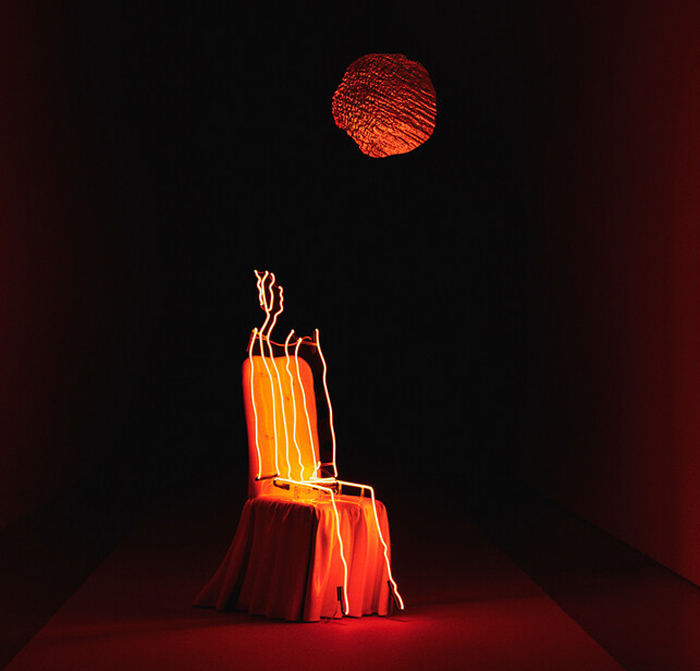Press Release
The Finnish-

Lap-See Lam, Dreamers’Quay, Dreamers’Key
Bonniers Konsthall, Stockholm (Sweden)
09.02 - 03.04.2022

Exhibition 09 February -
In several of her works, Pieski references the Sami craft of duodji, with materials such as wood, silver, and textiles. Duodji was marginalised in the wake of colonisation, but the tradition still has a strong hold: “Duodji is a collective way of making. It is our connection to each other, to past and future generations, and to nature. For me, duodji is radical softness dealing with vulnerability, sincerity, sensibility and communality.”
The exhibition at Bonniers Konsthall is based on the traditional Sami horn headgear, ládjogahpir, which Pieski is relating to the history of Sami women. Her installations are often based on a collective practice involving collaborations with other artists, researchers, and activists. Paintings, photographs and graphic elements in the exhibition builds on an extensive study of the object, carried out by Outi Pieski and researcher Eeva-
Outi Pieski’s exhibition is a co-
Lap-


© ArtCatalyse International / Marika Prévosto 2022. All Rights Reserved